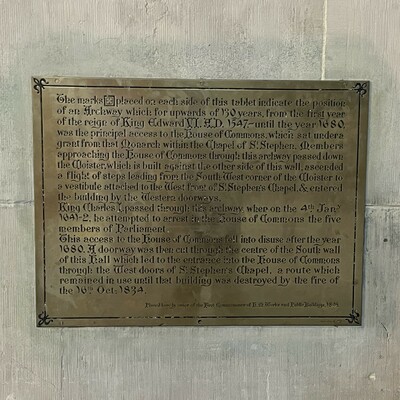The palace of Westminster has been the home of Parliament since a meeting there in 1295. It split into two "houses" in 1341 but, having been built as a royal residence, the palace had no suitable meeting spaces so the two houses used a number of different rooms. Then in 1547, as one of the results of the dissolution of the monasteries, St Stephen's Chapel, inside the Palace of Westminster, fell vacant and was used thereafter as the debating chamber for the Commons.
Over the years many changes were made to the chapel and then on 16 October 1834 the Palace of Westminster was largely destroyed in a fire and of St Stephen's only the cloisters and crypt survived.
Charles Barry and Augustus Pugin built the Gothic-style replacement palace over the period 1840-1870. The Commons chamber was completed in 1852.
On the night of 10/11 May 1941 the Commons chamber was badly bombed. After the war it was rebuilt by Sir Giles Gilbert Scott, in a simplified version of what had been there before. More details at .
As well as the stonework in Hampstead there is also a (thanks to Scott Martin for this bit of info.) apparently 'set free' by the 1941 bomb but it's not clear if it is a rare on-site survivor of the fire or part of the Victorian replacement. The wonderful tells us that after the 1941 bomb authenticated lumps of stone from the building were modelled into ash-trays etc. and sold for war-time charities. Another post reports that a rather odd 2014 sculpture in Bermondsey contains fragments of the Houses of Parliament, which we'd guess came from the House of Commons.
See also Houses of Parliament.
This image is captioned at source: "Interior of the House of Commons In Session by Peter Tillemans, c. 1710. Pre-1834 interior of the House of Commons when it was situated in the medieval chapel of St. Stephen's where the House of Commons had sat since 1547. This painting shows the galleries designed by Sir Christopher Wren. The Speaker depicted is believed to be Richard Onslow. The arms of Queen Anne are shown above the Speakers chair."











Comments are provided by Facebook, please ensure you are signed in to see them